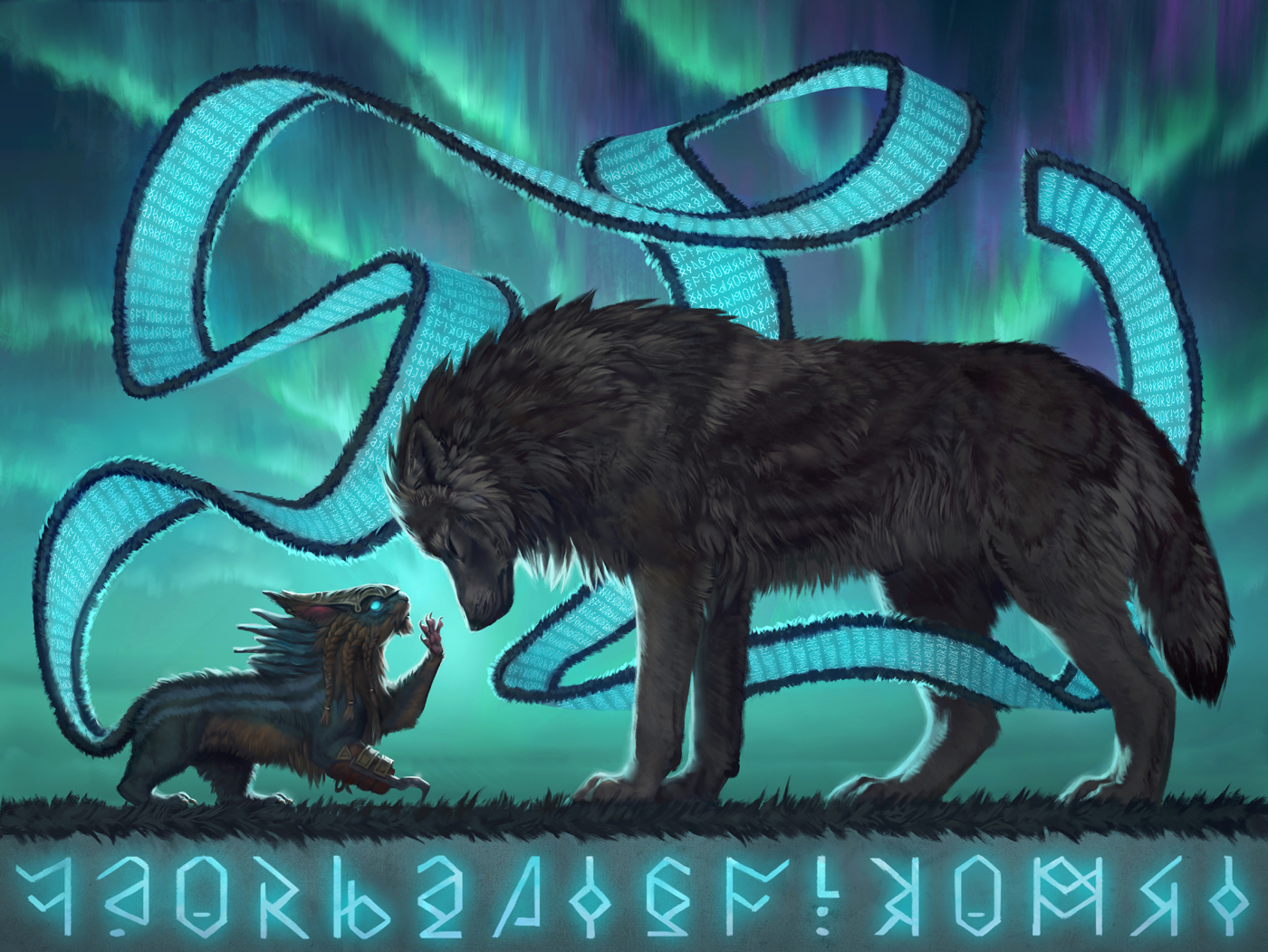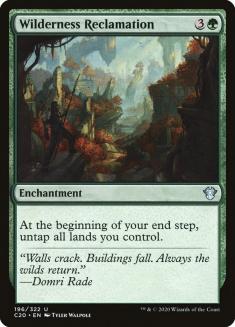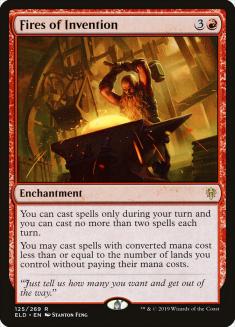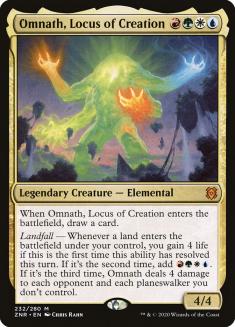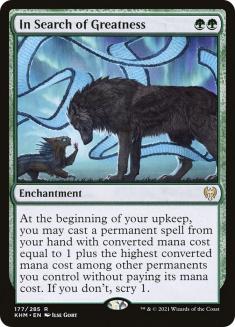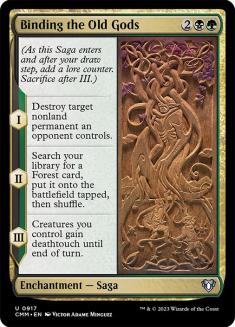Having an easily accessible backlog of my Magic takes has created two pronounced impacts on my Magic career. First, I’ve picked up a lot of I-told-you-so equity. Being able to point to something you recognize before everyone else earns a lot of worthless internet points. With judicious application of my social media presence to manipulate the narrative and only highlight the things I get right while conveniently excluding the myriad things I get wrong, I’ve been able to carve out a nice little role for myself as an expert. Or a grifter. Depends who you ask or how bad my impostor syndrome is on a given day. Also, is there actually a difference?
The more practical (and less self-deprecating) impact of my archives is that I have an ever-growing set of predictions to analyze for accuracy. This has proven especially valuable for improving my evaluations of cards during preview season. Having written about enough new sets, I am starting to see some patterns with my hits and misses. Today, I want to talk about how I ranked some of the mana engines that have shaped Standard over the last couple of years.
Here’s a card where I was ahead of the curve. I had Wilderness Reclamation as my number-one card in Ravnica Allegiance, and I think time has been kind to that position. This card was probably the genesis of my “If it’s free, it’s me” catchphrase. Getting immediate return on your investment was common, and subsequent mana output scaled dramatically as long as you were willing to pay a small deckbuilding cost. It was even good in multiples and existed alongside an instant-speed Time Walk in Nexus of Fate. Calling this potentially broken seemed safe, and I remember being surprised that everyone didn’t see things the same way.
Then Throne of Eldraine came and I basically ignored Fires of Invention throughout the entire preview season and excluded it from my Top 10 list. Certainly, there was a lot of noise in the set, and even redoing a Top 10 list today might still have Fires of Invention further down the list, behind things like Oko, Thief of Crowns; Once Upon a Time; Brazen Borrower; and Lucky Clover. Still, there’s no excuse for not recognizing the massive mana output the card was capable of. Plus ten mana on Turn 5 is simply beyond the realm of things fair decks can compete with.
I think the restrictions on the card were the red herring when it came to Fires of Invention. I was scared to give up access to instants, and a two-spell-per-turn limit read far more limiting than it actually was. Ultimately, the lesson here was that there is a mana-generation threshold where restrictions just don’t matter. Messing with mana is messing with the DNA of Magic, and it can spawn monsters that look nothing like “traditional” decks.
When it was time to evaluate Omnath, Locus of Creation, I hedged a bit. I recognized Omnath as one of the most powerful cards in the set, but not the multiformat, immediately banned monster that it proved to be. Here, I thought a restrictive mana cost and a few hoops to jump through prior to mana production would save the day. Again, the lesson was that mana output of a certain degree cannot be safely contained.
Time to put this lesson into practice.
In Search of Greatness is probably the most restrictive of these mana engines. However, it costs two mana, is a reasonable card in its fail state, and stays functional in multiples. How much mana does a two-drop have to produce for it to be overpowered? If this produces three mana and sits around the rest of the game scrying in your upkeep, I think you’ve gotten a tolerable deal. What if it produces seven mana? How about twelve? Now we’re starting to get into the realm of format-altering.
Of course, we’re talking about a best-case scenario. Keep in mind that In Search of Greatness doesn’t look at itself, meaning that it’s only good for a one-drop if it’s the only nonland permanent you have on the battlefield. Also, restricting the effect to permanents is a real limitation. If In Search of Greatness is going to live up to its potential, the deck it features in will have to do five very specific things.
1. Maintain a High Permanent Count
If you want to pull mana out of this card, you’ll need plenty of the card types it can actually cast. The windows to use In Search of Greatness to its maximum potential are small, and if you top your curve, you won’t always get a second chance.
2. Stay Card-Flush
This is just an extension of the first principle. If you’re low on resources, you’re less likely to have a card that falls at the mana cost you need. If you’re getting free cards on multiple turns, you may also reach the end of your hand before you’ve maximized the In Search of Greatness benefit.
3. Work the Entirety of the Curve
If your curve stops at two, you won’t achieve much by building around In Search of Greatness.
4. Have a Home for Excess Mana
You can’t always count on your cards lining up in such a fashion that you’ll be able to maximize mana expenditure when In Search of Greatness starts doing its thing. Having permanents that can make use of spare mana will smooth out the rough edges in your curve.
5. Make GG Early
With our current manabases, I’d argue that this mana requirement is harder to meet than Omnath’s was. Pathways are simply not great for making two of the same color early, and doing so will severely limit color-hungry decks in the mid-game.
These five requirements will disqualify a huge percentage of ideas. Normally when I write preview articles, I throw out a bevy of decklists designed to highlight what the card can do. I can’t do that with In Search of Greatness. I’ve got exactly one Standard list to offer you. But wow does it check these boxes.
Creatures (19)
- 4 Gilded Goose
- 4 Wicked Wolf
- 1 Charming Prince
- 3 Yorion, Sky Nomad
- 4 Llanowar Visionary
- 3 Skyclave Apparition
Planeswalkers (5)
Lands (34)
Spells (22)

Obviously, I’ve been down this road before. Selesnya Blink was a flash in the pan during Zendikar Rising Standard, but it did some things very well. This list is like Selesnya Blink turned up to eleven. It meets our five points while leveraging an already-solid core. If you’ve played Selesnya Blink, you know the strategic goals here, so I want to focus mostly on what has changed.
Companion Yorion
I said a lot about 60-card Yorion, Sky Nomad decks a few months ago, but several things have changed. The biggest point in favor of companion Yorion is the aforementioned desire to have a home for excess mana. It’s far more tolerable to take a turn off to put Yorion into your hand when you’ve got a mana engine advancing your battlefield anyway.
There are also some non-negotiable inclusions in this deck and finding the space for them in 60-card versions after the addition of In Search of Greatness just leads to a lot of hedging. If In Search of Greatness didn’t have the acceptable fail state of “scry 1,” I’d be more concerned about maximizing the draws where you cast it on Turn 2. As this deck is built, I think you can make decent use of the card whenever it turns up.
Black Splash
Obviously the addition of Darkbore Pathway does some work to smooth out a potential splash, as does an expansion to 80 cards and a move to a Fabled Passage manabase. But the decision to branch out to a third color has far more to do with a new print. Speaking of…
New Cards
Let’s not bury the lede.
When all is said and done, I expect Binding the Old Gods to be one of the top cards in Kaldheim. A card-neutral, hyper-versatile removal spell would be news in and of itself. But Binding the Old Gods can also be blinked with Yorion. It can find Indatha Triome. And it can be put onto the battlefield with In Search of Greatness, thereby speeding up its cycle by a full turn and potentially taking out two permanents in the same turn if you’ve got a Yorion at the ready. If this were a rare, I think everyone would be raving about it. As it stands, it’s flying a little under the radar. Don’t expect that to last.
The other additions are a little narrower in their roles, but if any deck can leverage Kaya the Inexorable, it’s this one. I had sideboard Shatter the Sky in this list until earlier today, but obviously Doomskar changes things. This is one of, if not the best, sweepers ever printed, and completely changes the calculus against aggressive decks. It might be worth sideboarding an additional foretell card in open-decklist situations just to create some uncertainty.
Other Shifts
The other alterations from my older Selesnya Blink lists are mostly small tweaks. I’m playing more Golden Egg because of how well the card interacts with In Search of Greatness and a desire to keep my ratio of potential Yorion blink targets closer to the 60-card lists. Meanwhile, my numbers on Skyclave Apparition and Elspeth Conquers Death are sliding down a bit because of the addition of Binding the Old Gods and compatibility with a need to make GG on Turn 2.
What we’re left with is a deck that can still outscale everything in the format, but can do it much more quickly with the addition of a mana engine. This means that small disruptive elements like Duress and Elspeth’s Nightmare can open windows for success against things that Selesnya historically struggled with like pure control or Ugin, the Spirit Dragon-focused ramp decks.
I don’t think Standard is the only place In Search of Greatness has a shot. I’ve seen some folks mention the combination of Leyline of Abundance and In Search of Greatness in Historic or Modern, and I think this kind of misses the point. You fail to “Stay Card-Flush” or “Work the Entirety of the Curve” with these setups, and you’ve turned your deck into a one-trick pony trying to get five free mana on Turn 3.
I don’t think this will even be all that meaningful in Modern or Historic, to say nothing of how rarely it will even happen. The four-mana card people should be focused on is Karn, the Great Creator.
Creatures (18)
Planeswalkers (11)
Lands (21)
Spells (10)
Sideboard

This deck doesn’t look to reinvent the wheel. It’s basically the stock Mono-Green Devotion list that’s been floating around Pioneer for a while with yet another powerful mana engine inserted. In Search of Greatness even has two pips to empower your Nykthos, Shrine to Nyx!
The ability to minus a Karn, the Great Creator and reliably turn it into a free Skysovereign, Consul Flagship or Verdurous Gearhulk on your next upkeep is tremendous, and the climb up the curve can even continue into God-Pharaoh’s Statue and Meteor Golem. With an entirely permanent-based deck, I expect the non-Karn applications of In Search of Greatness to be completely acceptable as well. Pioneer isn’t getting a lot of love right now, but when it does, this could just be the next big thing.
The first time I actually cast In Search of Greatness will be a moment of clarity. It will either immediately establish itself as the next problematic mana engine or the restrictions will make themselves felt and the card will be forgotten. Past experience suggests we’re dealing with the former, but I would be extremely happy to get this call wrong.

